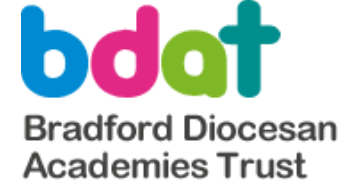More than half of MATs fell below the average for Progress 8 performance measures last year, despite a slight improvement on the year before.
The government has today published its multi-academy trust (MAT) performance league tables, based on 2017 exam results.
The analysis is based on key stage 2 and key stage 4 exam results, and only includes trusts running at least three schools and which have been established for three or more years.
The results of special and alternative provision schools in trusts are not included in the figures.
The release follows the first and second MAT league tables published in the last couple of years, and marks the first time that MAT league tables have been published alongside those of schools.
1. A higher proportion of MATs have above-average Progress 8 measures
Trusts have improved their key stage 4 progress performance, with just 53 per cent falling below the national average in 2017, compared with two thirds in 2016.
Of those that fell below the average last year, 45 per cent were “significantly below” average in their Progress 8 performance last year, compared to just over half of academy trusts (51 per cent) the year before.
Meanwhile, nearly half of MATs (47 per cent) achieved above-average Progress 8 scores, an improvement last year’s figure of 34 per cent.
Of those that were above-average, 31 per cent were “significantly above” average, compared with 23 per cent the year before.
2. A higher proportion of MATs have good writing progress at KS2, but maths flatlined
57 per cent of MATs had average progress scores for writing at key stage 2, an improvement on 53 per cent in 2016.
There was no change in maths. The proportion of MATs with above average progress scores remained at 49 per cent.
3. The proportion of MATs with poor reading progress at KS2 is worse
In 2015/16, less than a third (31 per cent) of MATs were significantly below average for reading progress at key stage 2. Last year that figure rose to 33 per cent.
Overall, the proportion of MATs with below average scores for reading at key stage 2 has risen from 54 per cent two years ago to 59 per cent last year.
4. Fewer large trusts sit at the feet of the tables
Last year, Schools Week’s analysis showed some of the largest trusts were ranked at the bottom of the table, including Academies Enterprise Trust, Ormiston Academies Trust and E-ACT.
This year, the worst performers for progress include the Wakefield City Academies Trust, which is in the process of handing over all 21 of its schools, and Lilac Sky Academy Trust, which appears in the tables despite handing its schools to other trusts in the summer of 2016.
Some trusts that cropped up as poor Progress 8 performers in 2016 did so again last year, including the Greenwood Academies Trust, which has 29 schools. Others appearing for the second year in a row were the Midland Academies Trust (four schools), the Learning Schools Trust (three schools), the Woodard Academies Trust (five schools) and UCAT (six schools).
Among the worst progress performance at key stage 2, the Ninestiles Academy Trust, formerly headed up by regional schools commissioner Christine Quinn, appeared again.
Worst performers for Progress 8:
Hart Schools Trust
The Midland Academies Trust
Wakefield City Academies Trust
University of Chester Academies Trust
Eastern Multi-Academy Trust
Aldridge Education
Greenwood Academies Trust
Fylde Coast Teaching School
Woodard Academies Trust
Learning Schools Trust
Worst performers in reading progress
Ninestiles Academy Trust
Lilac Sky Academy Trust
Haberdashers Askes’ Federation Trust
Gateway Learning Community Trust
The Williamson Trust
Worst performers in writing progress
Lilac Sky Academy Trust
Ninestiles Academy Trust
Chulmleigh Academy Trust
University of Chichester Academy Trust
Innovate Multi-Academy Trust
Worst performers in maths progress
Lilac Sky Academy Trust
The Blyth Quays Trust
Askel Veur – Diocese of Truro
Ninestiles Academy Trust
The Williamson Trust
5. Ministers’ favourite trusts are top performers
The Harris Federation in London (33 schools) and Inspiration Trust in East Anglia (10 schools), to which ministers regularly point as examples of good practice, achieved some of the best Progress 8 scores in the country.
Other large high-performing trusts include Ormiston Academies Trust, with 32 schools, Outwood Grange Academies Trust, with 22 schools, and Kent Catholic Schools Partnership, with 24 schools.
However smaller trusts, such as the Burnt Mill Academy Trust, which has seven schools, and the Bourne Education Trust, which has 10 schools, also put in strong progress performances at key stage 2.
Best performers for Progress 8:
The Thinking Schools Academy Trust
Inspiration Trust
Harris Federation
Diocese of London Trust
Dixons Academy Trust
Outwood Grange Academies Trust
The Seckford Foundation Free Schools Trust
Kent Catholic Schools Partnership
The Diocese of Westminster Academy Trust
The Redhill Academy Trust
Best performers in key stage 2 writing progress
Outwood Grange Academies Trust
Central Learning Partnership Trust
Dilkes Academy Trust
Bourne Education Trust
Herefordshire Marches Federation of Academies
Best performers in key stage 2 maths progress
St Barnabus Catholic Academy Trust
Burnt Mill Academy Trust
Bourne Education Trust
Harris Federation
Outwood Grange Academies Trust
Best performers in key stage 2 reading progress
Burnt Mill Academy Trust
Ormiston Academies Trust
First Federation Trust
The Flying High Trust
Blandford Education Trust
Here are the full multi-academy trust performance measures for 2016-17







Ministers’ favourite ARK seems to be missing from the ‘top’ list.
Answered my own question – ARK has well-above average Progress 8.
Has anyone got a link to the full table?
Will get one put in the article now!
Thanks Cath – really helpful!
Mark – not all MATs appear in the tables. The data only refers to MATs ‘with at least three schools that had results at either key stage 2 or key stage 4, as published in the 2017’school performance tables.’ Those schools had to have been with the MAT for at least three academic years.
Mark – If you want to find the performance of MATs which don’t appear in the DfE tables linked in the article, then you can go direct to School Performance Tables and search for the MAT. This also applies to all other MATs of course. If you just want to find data for one MAT then it’s easier to go direct to the School Performance Tables than grapple with the large spreadsheet.
There are times when using DfE data sets brings on a severe headache. For example – I tried to find data relating to the South Lincolnshire Academies Trust which has two academies: Bourne Academy and Spalding Academy.
GetInformationAboutSchools confirms that SLAT runs the two academies. But searching for SLAT on School Performance Tables took me to CfBT which said SLAT was under the sponsorship of CfBT. But neither Bourne Academy or Spalding Academy appeared in the list of secondary schools run by CfBT.
Spalding Academy was once John Gleed School which was once run by CfBT but SLAT took it over in Sept 2016 following a request by the local RSC.
Time for a coffee, I think.